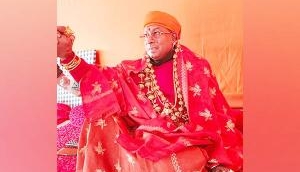Forget Kohinoor. the court and govt have better things to do

There are about 59,000 cases pending before the Supreme Court. It's staggering that one of them is a public interest litigation (PIL) on the return of the Kohinoor diamond. The Court entertained it because, according to media reports, if it dismissed the case, the British government could cite its decision as a reason to deny India's "legitimate claim".
To a layman, this is baffling. The diamond is one of the countless objects taken away to Britain and the rest of Europe over the last three centuries. The Victoria and Albert Museum alone has 40,000 items from India, the British Museum almost as many, and there are extensive holdings in other museums and stately houses, including Powis Castle, which Clive filled with what he filched from India.
Read- #Kohinoor: bottle the indignation, Britain has no legal obligation to return it
Almost all of them are of immensely more cultural, and in some cases, religious significance than the Kohinoor.
None were gifts; they were imperial plunder. India has a legitimate claim to all of them. The vast bulk of the Indian antiquities in British museums and private collections was simply taken away from archaeological sites.
Jewels and other precious objects were pillaged from conquered treasuries or wrung from defeated Indian rulers. As Nehru noted wryly in The Discovery of India, it was not surprising that the "loot" was one of the earliest Hindustani imports into English.
Why then is this diamond so uniquely important to the public interest that a Bench led by the Chief Justice of India should hear a petition that presumably asks the Government of India to get it back?
What's unique about Kohinoor
The British stole several valuables from sites or wrested them from owners as booty without pretending it was anything else. But they took the Kohinoor through a formal transfer of ownership under the terms of the Treaty of Lahore of March 1849. In that Maharaja Duleep Singh also renounced in perpetuity his claim to his kingdom.
It would be ludicrous for the Government of India to argue that Duleep Singh gave up only the diamond under duress, not his domain. It can only repudiate the whole treaty but if it does, it would mean Ranjit Singh's kingdom continued to exist.
That has many implications, not the least of which is that Gulab Singh's Kashmir could not then have been a princely State, which could accede to India. These are the dangerous absurdities into which it would be drawn.
In terms of international law, the Government of India can only tell the Court that the 1970 Convention on the Means of Prohibiting and Preventing the Illicit Import, Export and Transfer of Ownership of Cultural Property, to which it is a party, does not apply retrospectively.
The Convention does not prevent states parties "from concluding special agreements among themselves" for the return of cultural property taken before it came into force, but Britain acceded to it only in 2002, so even this route was not open earlier.
If it does try to engage Britain in negotiations over the restitution of cultural property, why should it be just the Kohinoor? There are thousands of objects with better claims, and there would be as many PILs in the Supreme Court preferring them.
India is not a party, as China and Pakistan are, to the 1995 UNIDROIT Convention on Stolen or Illegally Exported Cultural Objects. Neither is Britain.
The Supreme Court can hardly direct the Government of India to accede to the Convention, without trespassing blatantly on executive privilege. Even if India does, it will not matter as long as Britain does not.
Going back in history
Even if India demanded the Kohinoor and, in a departure from its declared policy, a British government agreed to consider the request, there are three other claimants.
Humayun gave it to Shah Tahmasp as payment for his help when he was in exile, and probably got it back later as a gift, but Nadir Shah took it to Persia with everything else he ransacked from Delhi.
Ahmed Shah Durrani took it with him to Kabul, and it was from his grandson Shuja-ul-Mulk, as payment for helping him get back the throne, that Ranjit Singh obtained the diamond.
Also read- Carat & Stick: why the Kohinoor is the world's most contested diamond
So both Iran and Afghanistan have claimed the Kohinoor. Rather risibly, so too has Pakistan, on the grounds that the Kohinoor was last in Lahore, before it was taken away to Britain.
This is manna for the British government. As with the Nizam of Hyderabad's accounts in Britain, to which Pakistan has contested India's claim, it will simply ask the four countries to first sort out their claims, and approach it only afterward.
The claims on the Nizam's money are still being fought out in a British court in 2016. Who will arbitrate between these four States on the Kohinoor?
What if it comes back
So there is no point of Indian or international law, or none that a layman can see, that needs the attention of the Supreme Court. If the stone does miraculously return to India, of course, the trustees of Jagannath Puri will most certainly remind the Court then that Maharaja Ranjit Singh willed the Kohinoor to their temple -- not to Duleep Singh.
Hehad no legal right to surrender to the British what was not his, and therefore, when it would be back, it should go where it belonged, to the sanctum of the deity. And that would be the end of that.
On point of fact, the stone in Britain is not the one invested with so much Indian legend. For a start, the Baburnama only surmises that the enormous stone which Humayun extorted from the family of the Raja of Gwalior was "the famous diamond that Alauddin must have brought".
The rough diamond, which Malik Kafur brought back for Alauddin Khilji from the Deccan, was said to weigh 793 carats. What Babur saw was an "eight misqal" diamond, which is apparently around 290 carats.
Shah Jahan had this cut; it was cut badly and reduced to 186 carats. The final reduction, on the orders of Victoria's consort, brought it down to 106. This is a moth-eaten, mutilated Kohinoor, not the stone that Babur wrote would pay to feed the whole world for two-and-a-half days.
And it is one of several extraordinary diamonds from the mines of Golconda. Almost all of them, like the Kohinoor,was part of the regalia of one Indian ruler or another. They are now with other countries, taken, for the most part, under duress.
Read: Kohinoor is not the biggest diamond in the world!
None of them will return what they have. As David Cameron made plain, once a concession is made, other demands will follow, which cannot logically be turned down.
And one shudders to think what would happen to these priceless artifacts, so carefully tended in museums abroad, if they returned to the tender mercies of the Archaeological Survey of India.
Better things to do
Should this really be something for the Supreme Court to spend its time on, or the central government, on its directives?
Almost any one of the 59,000 other cases on the Court's Registry probably deserves its attention more. And the Government of a country where 40% children are still malnourished, which still has the highest incidence of absolute poverty in the world, surely must have better things to do than, futilely, try to beg back a king's bauble.
Edited by Joyjeet Das
More in Catch:
No change: Real Estate syndicates continue to influence Bengal polls
#DroughtDiary: Breweries water supply cut in half, mid-day meals and 1.5-feet deep wells
New Rajya Sabha members: Modi govt makes last-minute changes to list
Surge pricing: how Kejriwal govt's diktat can kill Ola and Uber
First published: 25 April 2016, 7:54 IST





![BJP's Kapil Mishra recreates Shankar Mahadevan’s ‘Breathless’ song to highlight Delhi pollution [WATCH] BJP's Kapil Mishra recreates Shankar Mahadevan’s ‘Breathless’ song to highlight Delhi pollution [WATCH]](https://images.catchnews.com/upload/2022/11/03/kapil-mishra_240884_300x172.png)

![Anupam Kher shares pictures of his toned body on 67th birthday [MUST SEE] Anupam Kher shares pictures of his toned body on 67th birthday [MUST SEE]](https://images.catchnews.com/upload/2022/03/07/Anupam_kher_231145_300x172.jpg)






